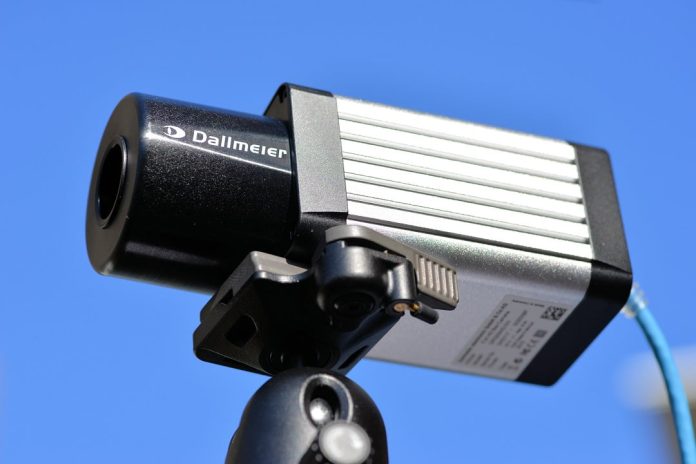Dallmeier’s DF5200HD DN is a full body 2MP IP camera featuring a 1/1.9-inch CMOS sensor and up to 120ips frame rate. This PoE camera has a motorised 4.5-10mm varifocal lens, and a claimed minimum scene illumination number of 0.002 lux.
DALLMEIER makes nice cameras and this DF5200HD-DN, distributed locally by C.R. Kennedy, is no exception to the rule. It’s a full body camera with an alloy housing that doubles as a heat sink. It’s compact – measurements are 71mm x 66mm x 176mm and the camera weighs in at just 300 grams. The DF5200HD-DN is part of a family which includes IR bullet and dome variations, and the findings of this test are likely to apply in good measure to those cameras as well.
Every camera boasts its strengths and in the case of the DF5200HD-DN, those are low light performance, thanks to that large 1/1.9-inch CMOS image sensor size and what Dallmeier calls the “most advanced sensor and encoder technology”. Dallmeier also suggests the camera is strong against blooming and smearing and is good with backlight. We’ve looked at some strong performances over the past couple of years, so it will be interesting to see how Dallmeier stacks up.
The DF5200HD-DN is only suitable for indoor environments out of the box making operating temperature of -20 to 50C perfectly suitable. The camera draws 6W and has a microSDXC card slot that can handle from 64GB to 2TB. The onboard storage can be used by the EdgeStorage function for storing the video stream in a network failure and SmartBackfill function ensures a fast transmission to the SMAVIA recording system after network restoration.
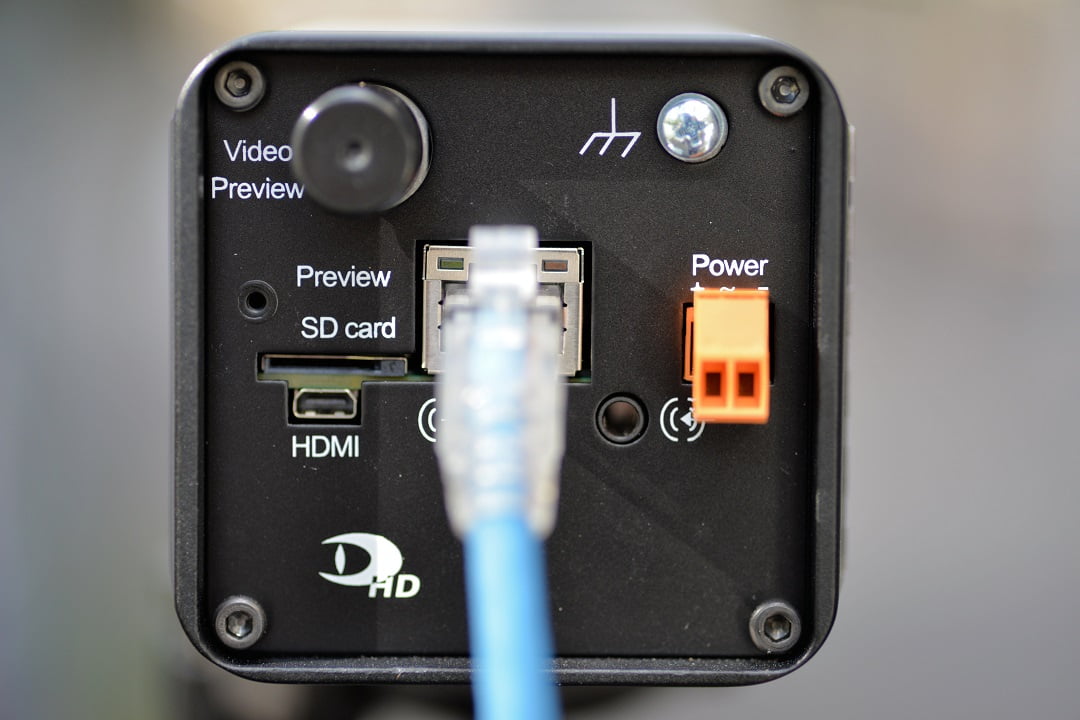
Unlike many modern cameras, there’s a clutch of rear ports including BNC, stereo audio in and stereo audio out, an RS485 serial interface, 3 contacts in and 1 out, RJ-45 and a power socket. The camera’s 4.5-10mm motorised varifocal lens looks to have a standard Magnesium Flouride coating in the red 550nm range to guard against flare and ghosting and this works very well. I see no sign of flare with the naked lens in our harsh district application during the day. I don’t put the sun in the image but it’s never easy for cameras in the rear courtyard facing 75,000 lux on a 41C afternoon.
Other features include Day/Night (ICR & ambient light sensor), P-Iris control, zoom, focus and iris control via web browser, enhanced noise filter and automatic switching of presets for different day and night modes. The camera delivers an HD video stream at a frame rate of 30 fps (1080p/30) and the optional high speed encoder board allows the camera to offer a frame rate of up to 120 fps at full resolution.
Video compression is H.264 and MJPEG with simultaneous dual, tri or quad streaming, there’s privacy zone masking, digital flip function, wide dynamic range function (WDR), 3D digital noise reduction (3D DNR), exposure compensation functions, image processing functions and alarm notifications via DaVid protocol, e-mail and FTP image upload.
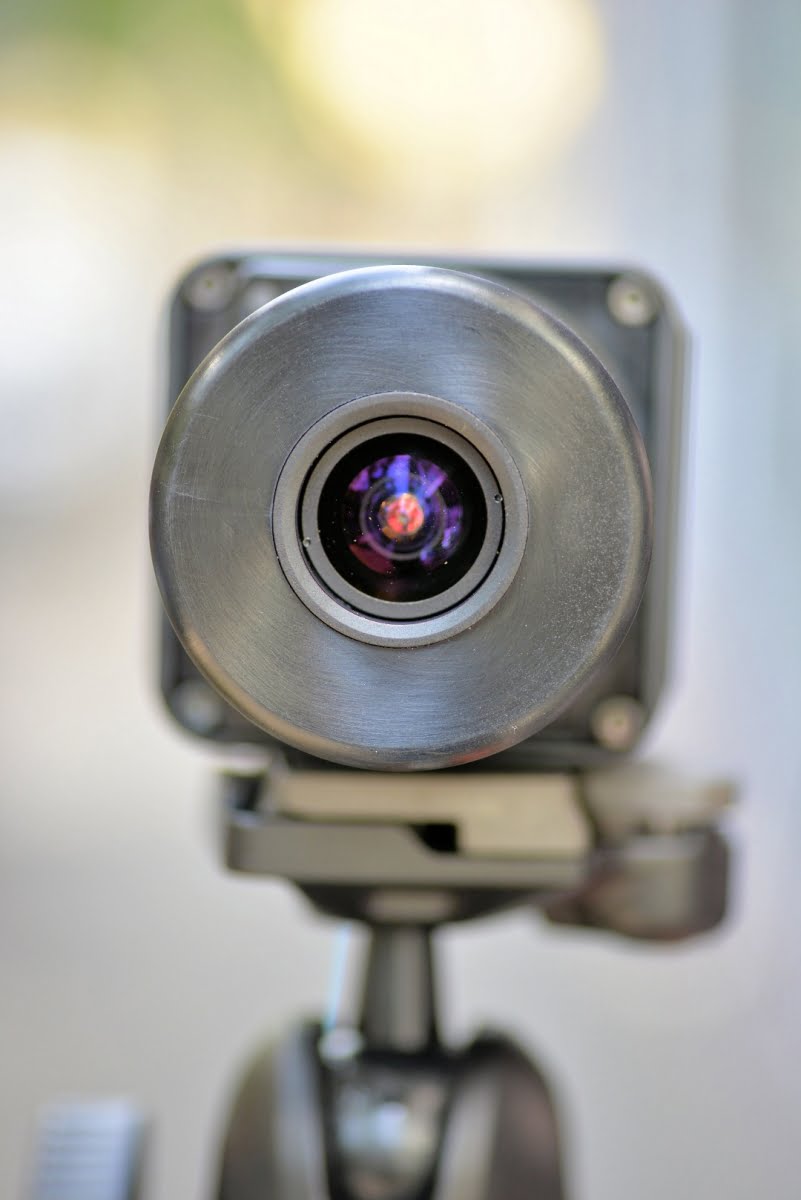
SEN’s same-old Dell 9020 server is in charge of handling the camera, with i7-4770 quad-core (8 threads per core), a clock speed of 3.4GHz, 8GB of RAM and an AMD Radeon R7 250 graphics card (2GB of RAM). We’re using a Netgear GS108P ProSafe 8-port Gigabit switch with 4-port PoE for power and comms. There’s only one other camera on the network at the same time – a Uniview IPC542E-DUG 2MP starlight.
My settings are default as much as possible. Brightness, sharpness, saturation at 50 per cent, exposure compensation, hue – at 0 per cent. White balance on auto, colour temp is auto, local tone mapping is auto, auto contrast is user-defined, auto contrast strength is at 24, noise filter is at 6. I increase brightness to 55 per cent as the afternoon wears on. I also reset preset preview to internal from external when I move the camera inside the office at night. There’s pronounced yellow shift otherwise – it takes me a while to work out what’s causing it.
Camera performance
My first impressions of the Dallmeier DF5200HD DN viewing the district scene during the mid-afternoon are that resolution is unexpectedly strong. Set to full frame rate and 5Mb I do see some stepping, though my settings are at 30ips. Later, I change my lowest shutter speed from 1/25 to 1/50 and this aspect is considerably improved with very little impact on image quality. It’s possible what I’m seeing has something to do SEN’s broadband performance, which is displaying some considerable periodic contention choking (we have a synchronous 20/20 upgrade booked). I think the latency at 1/50th is about 400th’s of a second.
At a 5mm focal length outside in the afternoon the 2MP image is oddly detailed. The naked lens handles flare well. Against extremes of backlight, performance is not quite as solid but the lens is completely exposed with the sun about 20 degrees above it. I also note typical scene darkening. However, when I turn the camera away from the sun, the image is very nice indeed, with excellent colour rendition, acuity and the appearance of much greater resolution than I expected. Depth of field at 5mm is very strong, with excellent contrast and detail. Performance in and out of shadow is less strong. Lack of motion blur is a real strength of this camera – not just in live video but in snap shots. This camera is great with faces and number plates.
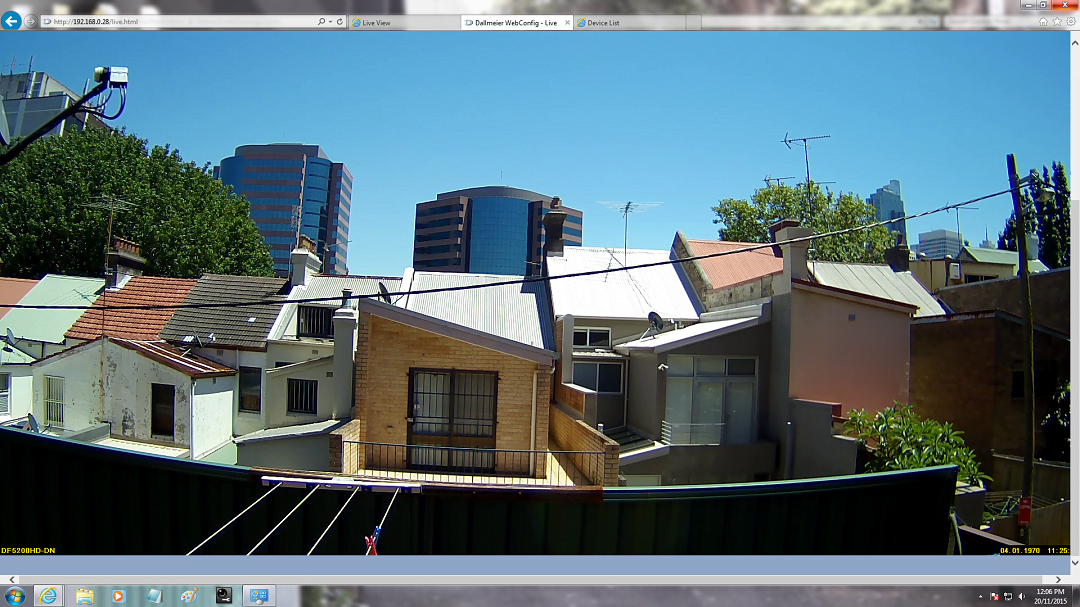
In this early part of the test, I also note some chromatic aberration in high contrast areas when the motorised lens is wide open but at 5mm this almost disappears until the sun is at an acute angle and then it reappears on the edges of a nearby building and powerlines. I estimate barrel distortion at 5mm to be no more than 5 per cent, which is rather good. There’s a light level that sees many cameras look a bit gloomy and with the DF5200HD-DN that’s about 11.7EV (7200 lux). And although CAs appear to increase as light fall, detail remains high. Light levels fall to 3600 lux) at 6.40pm and at 6.50pm I increase brightness to 55 per cent. That leads to the merest thought of noise reduction smoothing but it’s worth it.
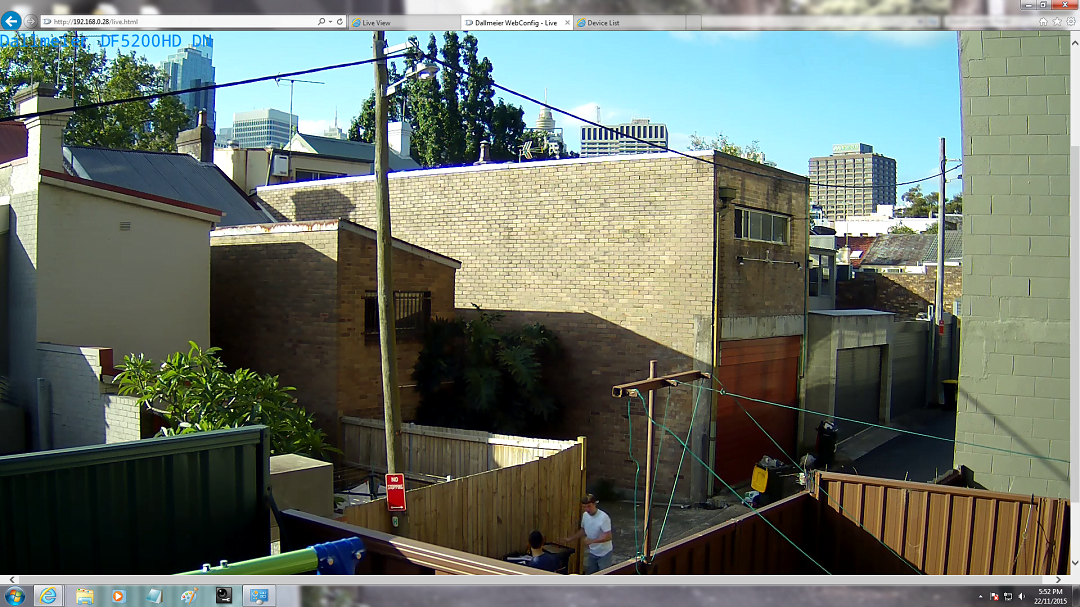
At about 7.15pm, light is 475 lux and I again note oddly strong resolution. I can nearly read the Memocorp logo. The resolution is an unexpected standout quality of this 1080p camera. I can’t understand it. The street lights in the lane are on and I note CAs around them. No blooming yet. While the DF5200HD DN is not a bright camera as light levels fall, the image remains strong at 7.25pm in 440 lux and below. The image seems to strengthen, even brighten as light drops off – how this is possible, I’m not sure – perhaps ISO amplification is kicking in. I think I’m starting to see a little noise creeping into some of the surfaces in this scene but depth of field is still very strong indeed and blooming remains well controlled. Not many cameras cope with having the low pressure sodium streetlights in the lane in their field of view.
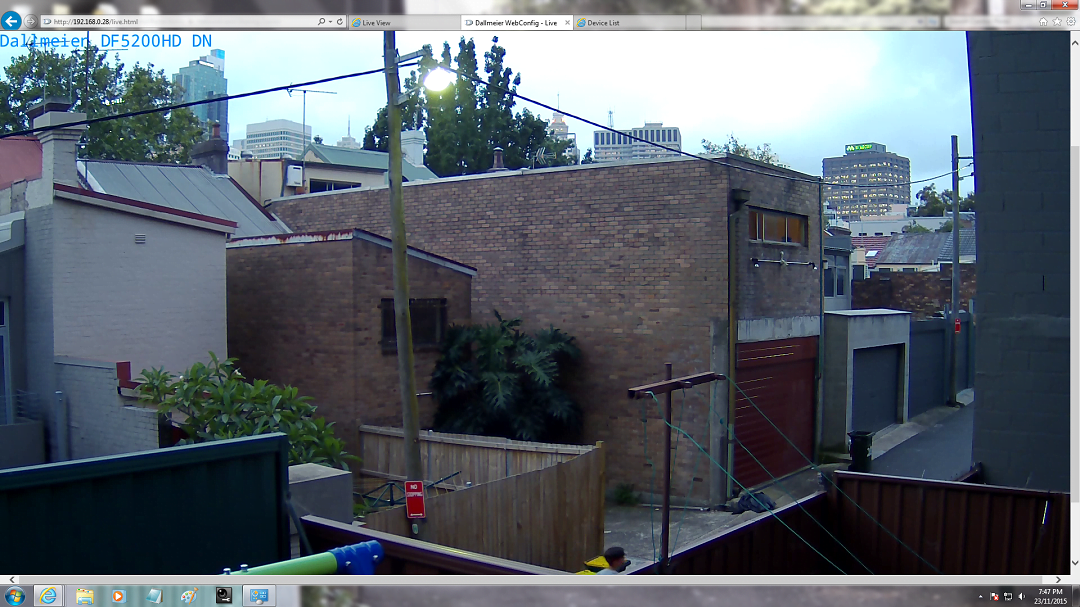
At 7.37pm light is falling faster – we are at 225 lux but the image still looks surprisingly tight. There’s perhaps a little more blooming around the light. Not much though. No noise at this time. At 7.47pm we are at 100 lux and I’m starting to lose detail in the dark areas of the image.
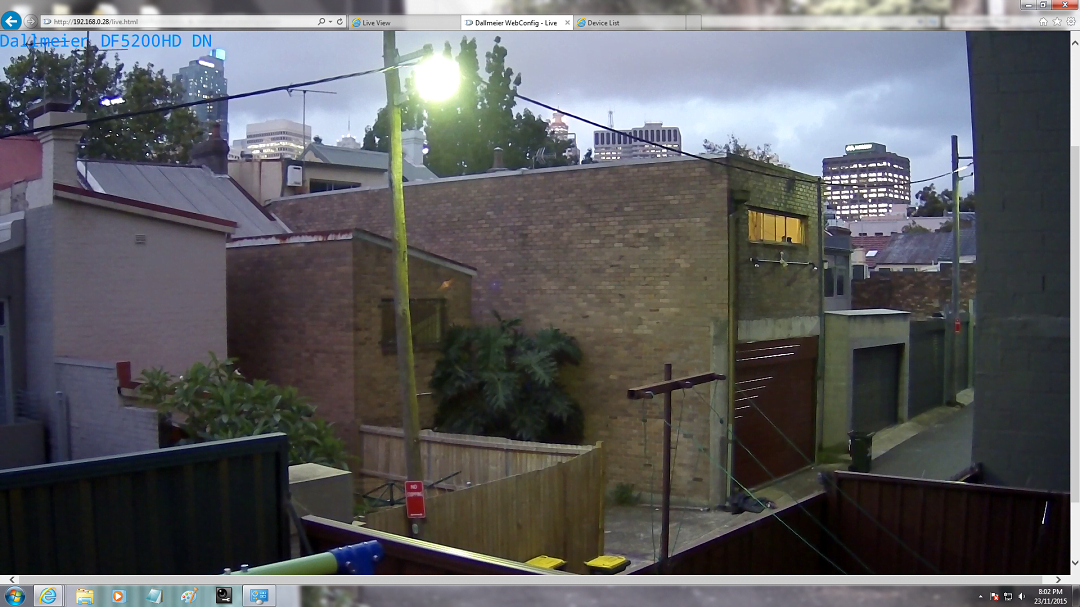
At 7.55pm we are at 28 lux. Fine detail is being lost in most the image but situational awareness remains good. The image gets a little smokier under this light level but from about 15 lux to sub-2 lux at the lens, I can’t see any change in the image. There’s no sign the camera is going to go into monochrome. Blooming around the streetlight has increased but it’s nothing that harms the overall situational awareness.
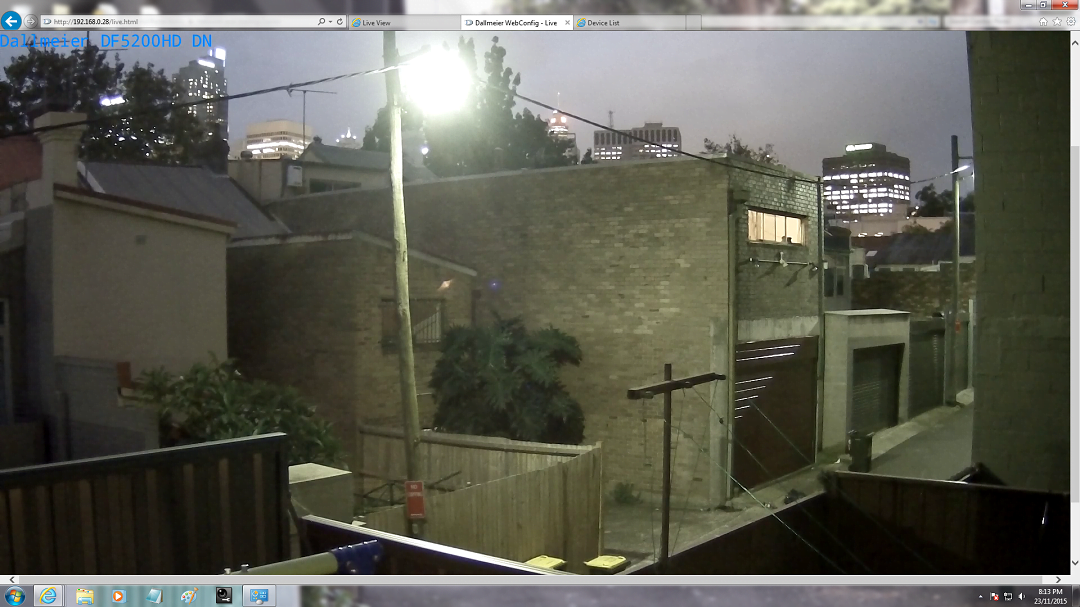
Next, I take the camera and test target out front of the office and in 7 lux the camera stays in colour. The scene is soft where light levels are lowest but good where there’s sufficient light. Perhaps the most surprising thing is the quality of the rendering of the target at the further distances.
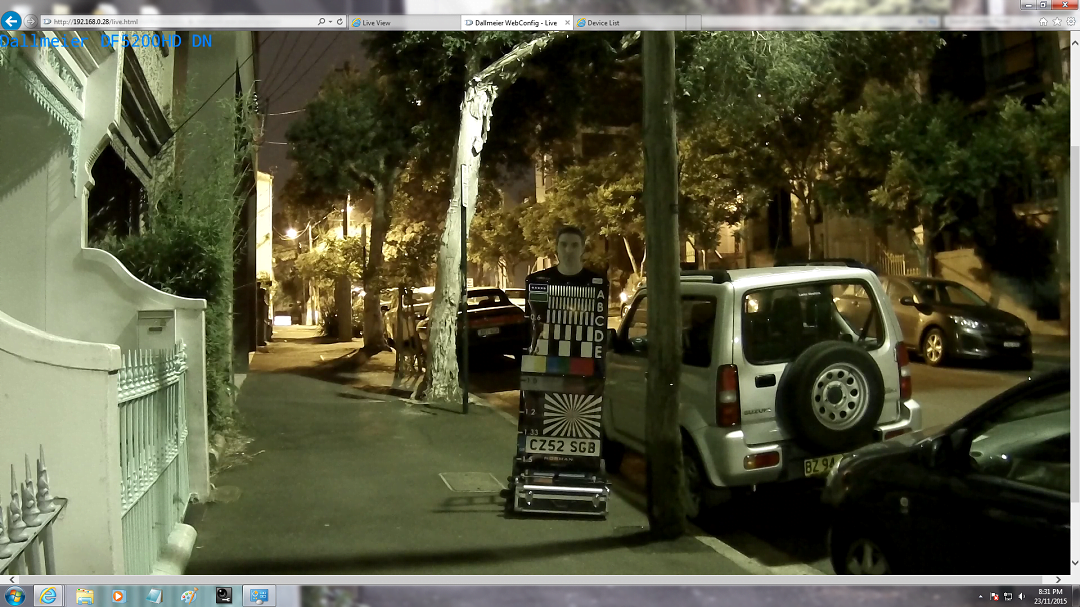
At 8m, Norman’s face is in the shadow of a tree. You can see the target with full clarity and all the lines are distinct but facial details are hard to make out in the shadow.
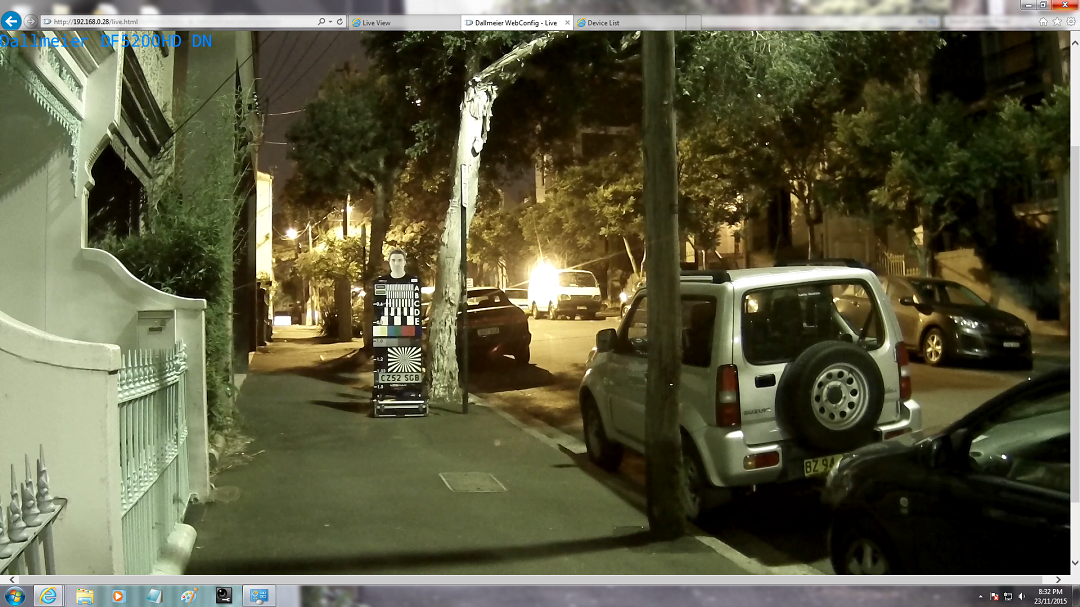
At 12m you lose the A-line but with light now falling on Norman’s face, identification is court admissible – in fact, it’s excellent.
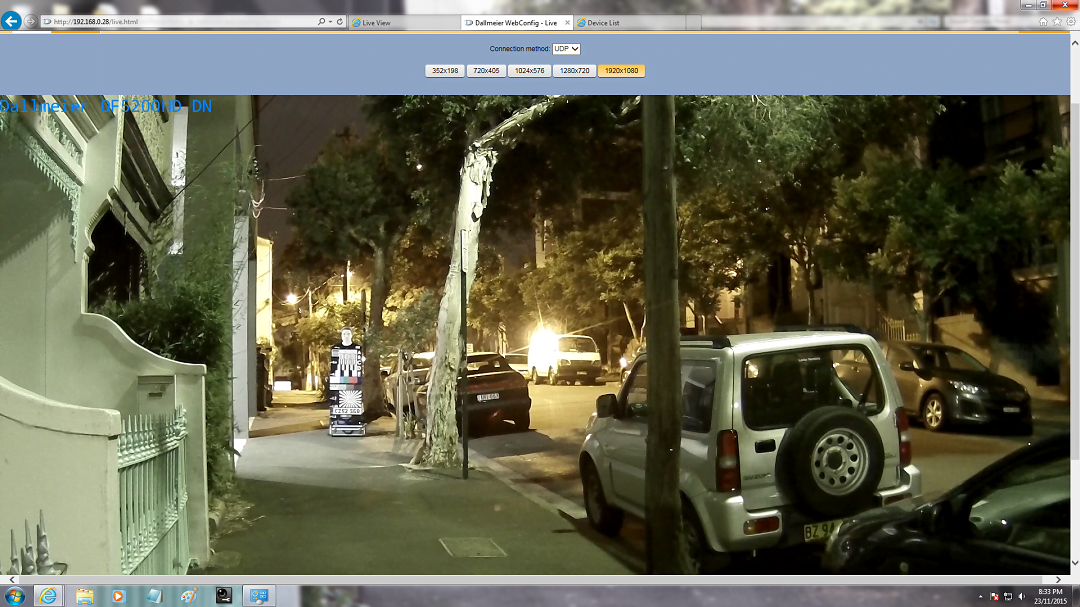
The same high quality performance from the C-line down is visible at 16m, with 15 lux of sidelight measured at Norman’s face and adjacent license plates recognisable. This is excellent work from a 1080p camera.
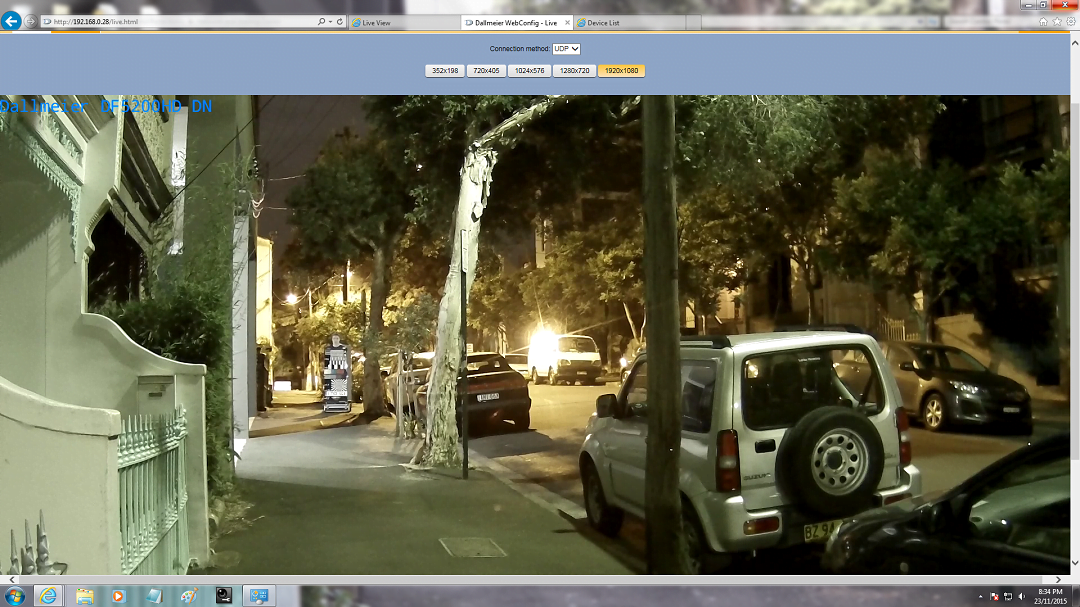
And at 22m, there is still distinction from the C-line down and colour rendition visible on the target.
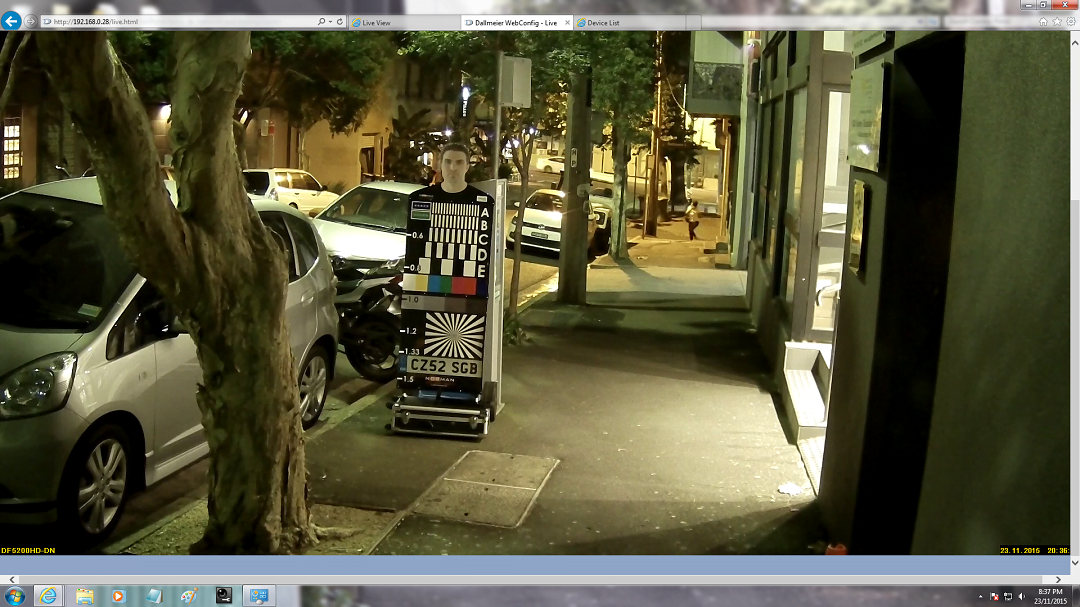
Looking down the hill to Foveaux Street, the strong depth of field gives excellent situational awareness.
The Dallmeier DF5200HD DN is good in low light – we never approach 0.002 lux which is starlight on a clear night, so it’s impossible to say what sort of performance the camera would offer under such conditions. But in urban environments between 1.5-7 lux, this camera stays in colour. It gives excellent situation awareness at the lower end of the scale and court admissible face recognition past 12 metres at a 5mm focal length with ambient streetlight falling on a face. Along with low light performance, resolution is the standout feature of the camera. In good light it feels more than 1080p.
Next day, I take Norman out first thing – it’s glaringly bright at 8.30am, with deep shadows. Performance is stronger on the light side than the dark, where it looks a little soft. But in harsh light on my side of the street at 8m I get a lovely image of Norman – it’s arguably the best daylight image I’ve had of the test target, with excellent delineation of lines and wonderful colour rendition and contrast. There’s a lot of movement at this time of day and I note again that motion blur with this camera is very low.
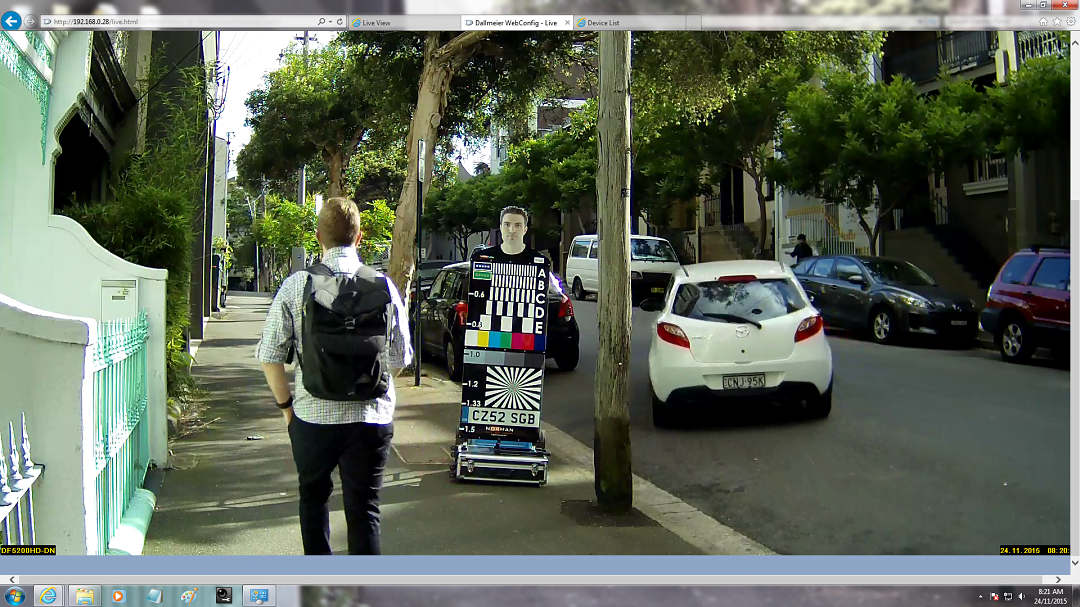
At 12m, Norman is in tree shade but performance remains very strong with face recognition and clarity of everything on the test target below the A-line. I take a shot as a truck goes by again and later note the comparative lack of blur in the image.
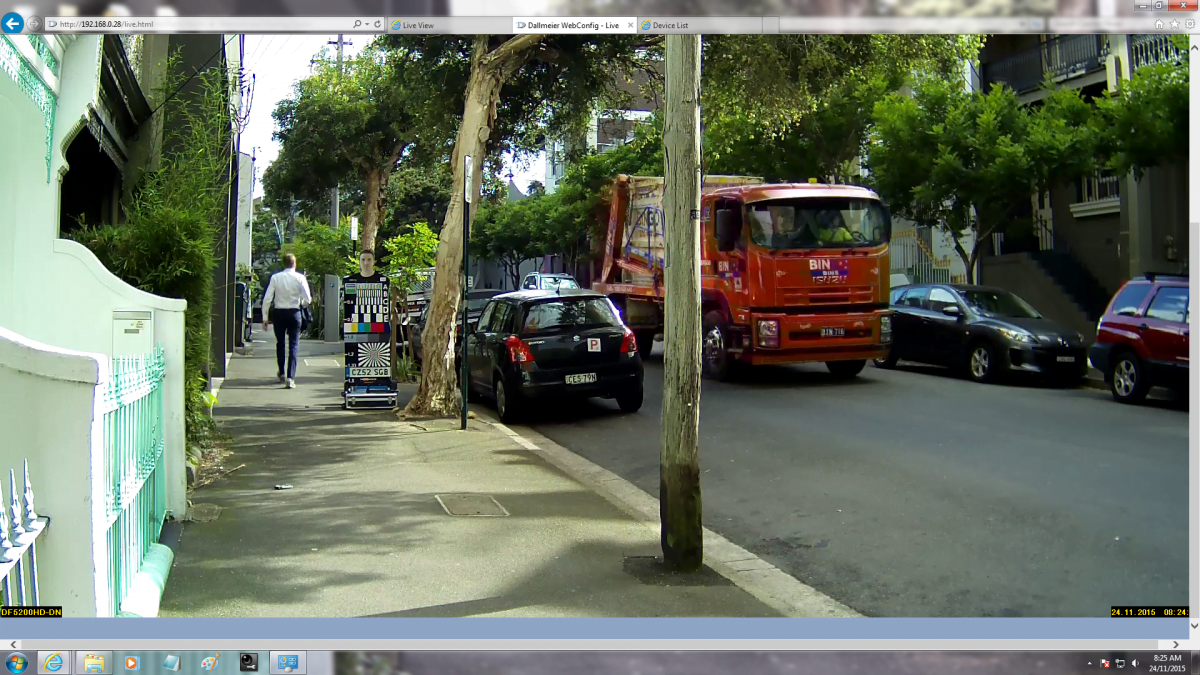
At 16m I think I’m on the boundaries of court admissible facial ID and we are just starting to lose the B-line on the target.
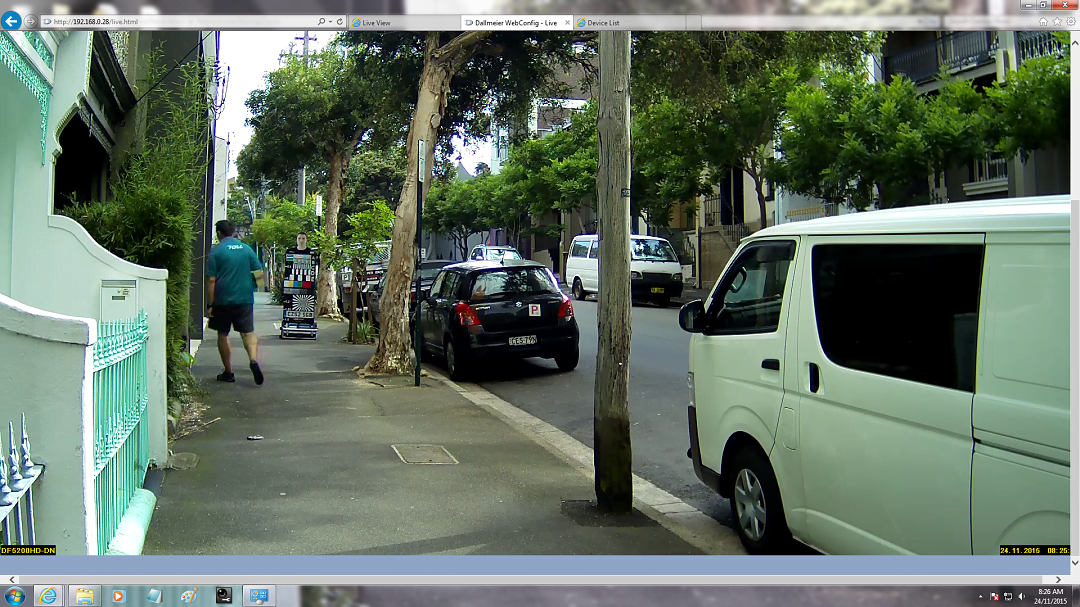
At 22m we’ve lost the A and B-lines but license plate recognition remains and confirmation of a known face is definitely possible. Digital zoom at this comparatively short focal length is more valuable for larger details than small but it’s still quite good.

Turning the camera away from the sun and looking down the street, facial ID is excellent at 5 metres and there’s good depth of field for situational awareness and number plates. Fine detail and texture are apparent and there are no noticeable aberrations or distortions in the image I can see with the naked eye.
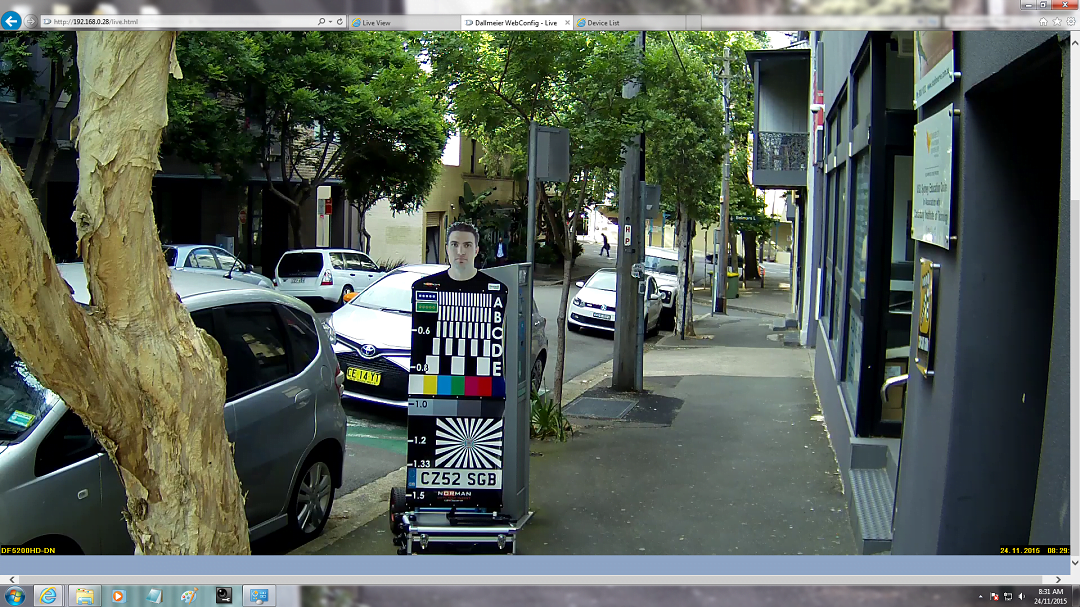
Next, I test WDR performance looking through the office in the late afternoon with 75,000 lux on the top window and glass door. In this application there’s good face recognition at the kitchen door but blooming behind Norman. I muck around with the settings to get rid of this but can’t. However, looking through the kitchen to the rear courtyard, performance is miles better, with some darkening of the foreground that’s made up for by excellent face recognition.
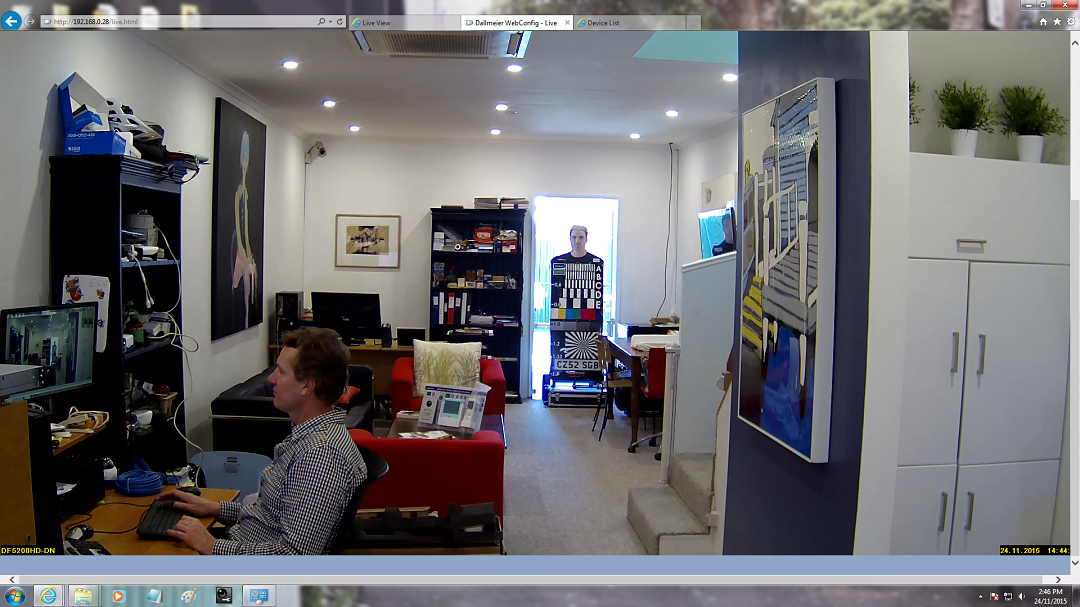
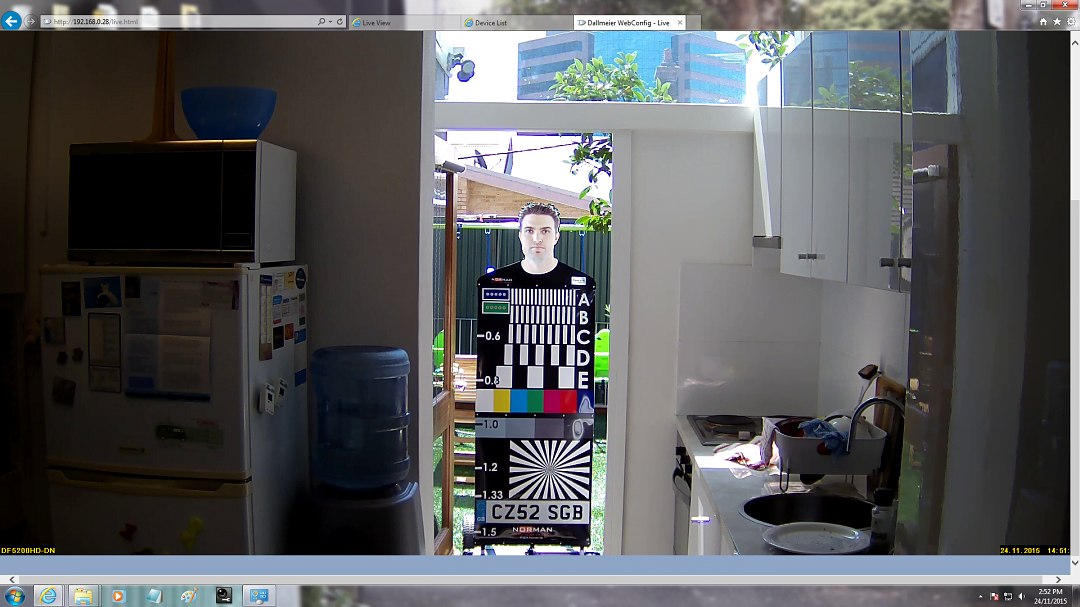
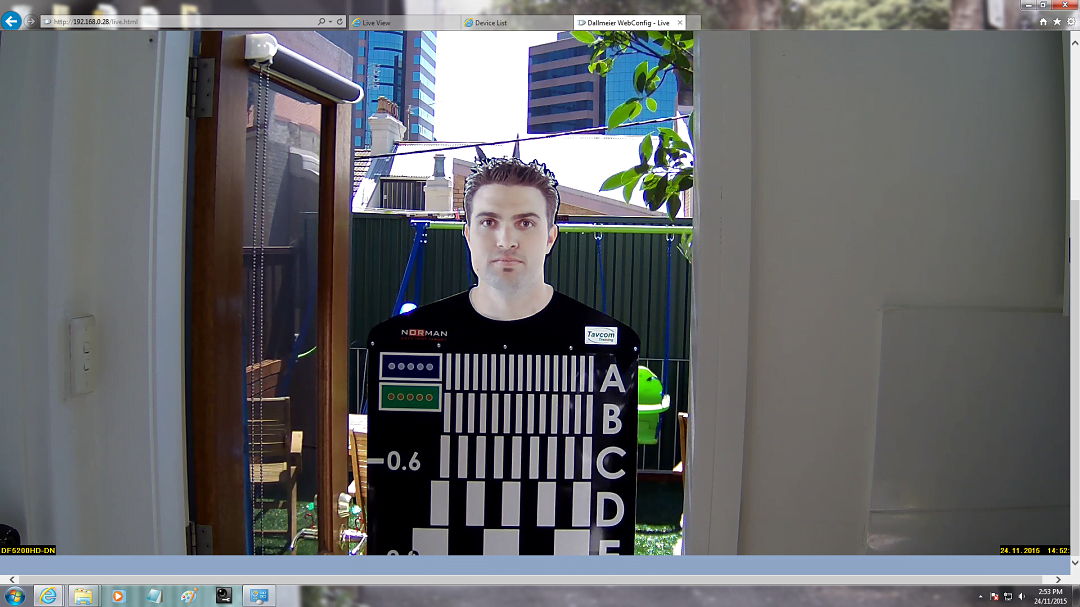
At close range with loads of sun behind him, the image of Norman delivered by the DF5200HD DN is right up there with the best of them, with depth of field strong for tens of metres. When it comes to the important combination of WDR and low light capabilities, the DF5200HD-DN is among a small group of 1080p cameras that contrive to balance contradictory capabilities extremely well.
Conclusion
Dallmeier’s DF5200HD DN is a solid performer. It’s not the best 1080p camera we’ve tested in all of the applications we subjected it to but it’s certainly in the top group for most of them. This camera does well unassisted in low light, remaining in colour and resisting extremes of blooming. There’s little noise in low light but there is some noise reduction smoothing in dark areas of low light scenes. The DF5200HD-DN does well against backlight, too. In some cases it’s not as good as the best we’ve ever seen but in other applications it might very well be the best of all.
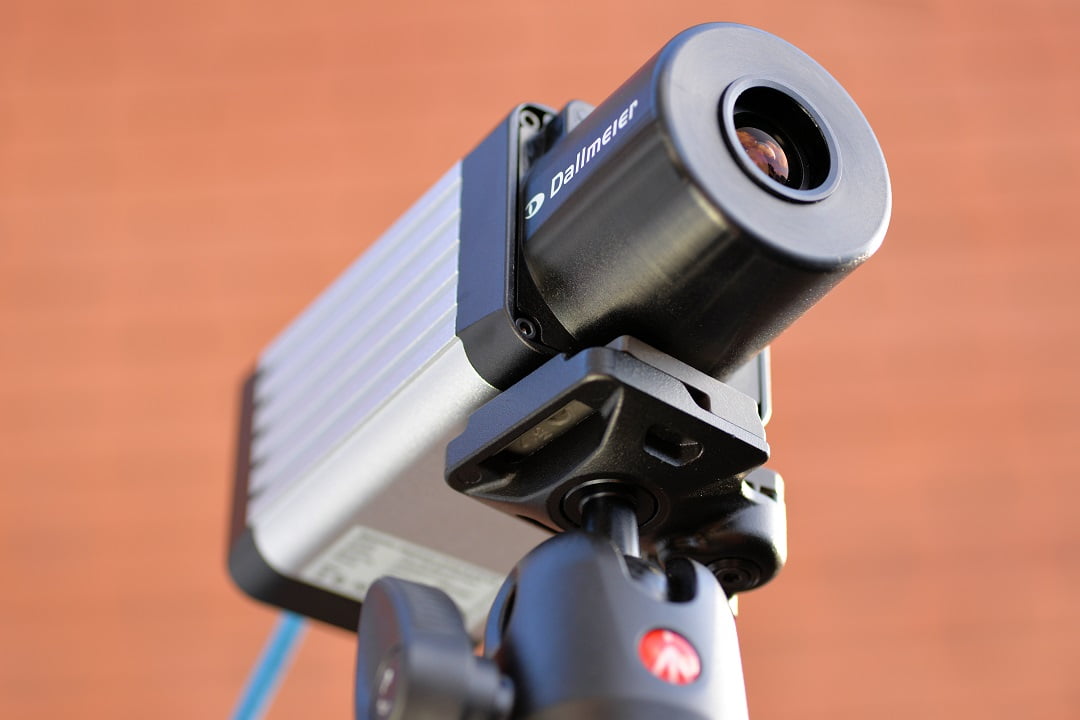
Strong WDR performance at closer ranges is not its only strong suit. The camera has notably good levels of detail for a 2MP camera and when it comes to motion blur, the DF5200HD-DN really does stand alone. Something else I notice day and night, is how well the DF5200HD-DN performs when it comes to the target – and not just in terms of the excellence of facial tones and textures. The performance in relation to Norman – particularly between 8-16 metres at a 5mm focal length – suggests that a clever balance of low light and WDR capability, along with high levels of sharpness, contrast and colour rendition, are delivering excellent levels of acuity across a range of operational conditions at near default camera settings.
By John Adams
Features of the Dallmeier DF5200HD DN:
* 2MP 1080p resolution
* Fast optional encoder delivers 120 fps
* 1/2-inch CMOS sensor
* Day/Night filter and P-iris control
* Motor-driven 4.5-10mm varifocal MP lens
* Zoom, focus and iris control via web browser
* Enhanced noise filter
* Integrated microSDXC card slot up to 2TB
* Compact and lightweight at 300g.




